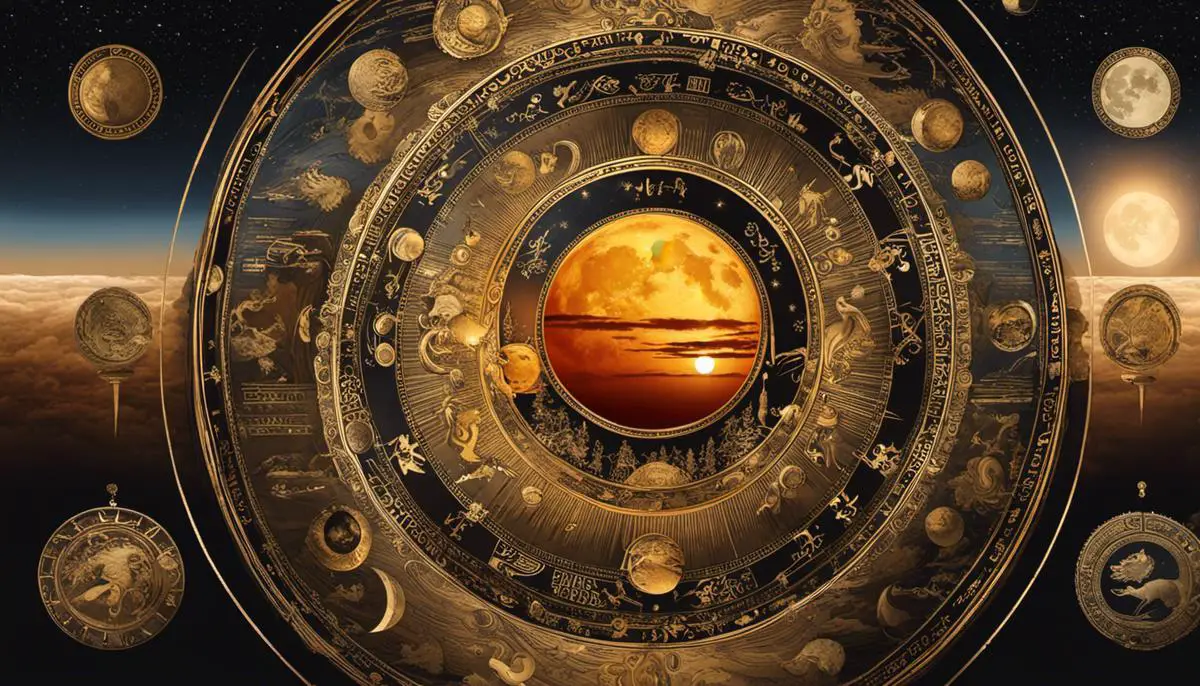In the captivating sphere of astronomy, the spectacle of a full moon never ceases to intrigue and fascinate. As we navigate the celestial phenomenon, the arrival of the Full Moon in November 2023 holds immense significance and invites a myriad of intriguing conversations, questions, and examinations. This event illumines various dimensions, linking it to the intricate elements of science, the engrained threads of historical and cultural contexts, as well as its debated influence on human behavior.
The Astronomic Significance of November 2023 Full Moon
The Astronomic Significance of the Full Moon in November 2023: A Confluence of Factors
In the cosmos of celestial events, the upcoming full moon of November 2023 holds an element of colossal astronomic significance, influenced by a distinct array of factors. The event in question is undoubtedly standing out as an extraordinary occurrence to be witnessed in the vast expanse of astronomical phenomena. This fascinating ethereal spectacle, colloquially known as the Beaver Moon, is renowned in astronomical circles for its inherently unique astral attributes and the potential insights it offers investigators into enigmatic lunar behavior.
One major contributing agent to this event’s astronomic prominence pertains to its specific point on the elliptical lunar orbit, otherwise known as perigee. During this phase, the Full Moon is the closest to Earth, lending it a superlative form and luminosity unseen in other lunar phases. This proximity offers scientists a fortuitous opportunity to observe and study lunar geology and topography in enhanced detail—significantly amplifying the educational yield of the occasion.
Another remarkable aspect is the alignment of the Earth, Moon, and Sun. The near-perfect alignment, classified as a syzygy, results in the illumination of the moon’s surface from Earth’s perspective—a spectacle that underscores the Moon’s majestic craters and diverse geological features. This alignment elicits a larger-than-average lunar disk visible on Earth, contributing to the so-named Supermoon phenomenon, offering a real spectacle to onlookers and astronomers alike.
Furthermore, the date of the full moon adds an additional layer to its astronomic significance as it coincides with a lunar eclipse. Rendering an even more rare episode, this syzygy will, in effect, make the Moon enter Earth’s umbra, casting a reddish hue upon its surface. This particular occurrence will provide an ideal platform for both professional and amateur astronomers to capture captivating photographs and probe into the intricate nature of this unique astronomical phenomenon.
Finally, from an astrophysical perspective, the November 2023 Full Moon fosters ample opportunities for scientific investigation into the Earth-Moon gravitational interplay. The combined stimulation by the Earth-Sun-Moon alignment and Full Moon’s perigee position inherently increases gravitational signals, allowing for an optimized observation ground for researchers aiming a deeper exploration into gravitational physics and Earth-Moon system.
Indeed, the Full Moon in November 2023 presents an amalgamation of astronomic circumstances, each contributing to its unprecedented significance. The event—spanning a vibrant palette of lunar perigee, syzygy, lunar eclipse, and Earth-Moon gravitational dynamics— positions itself as a highly anticipated milestone in the annals of astronomy, contributing to our ever-evolving understanding of the cosmos and our place within it.
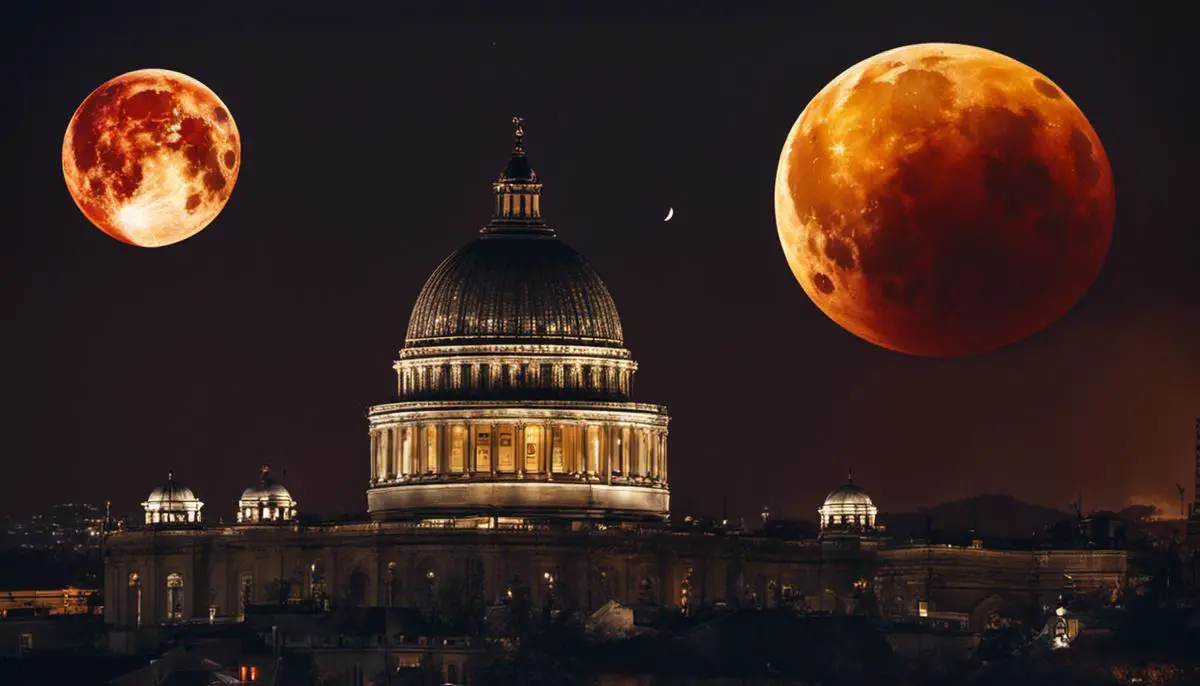
The Science behind Full Moon Phenomena
Diving deeper into the grandeur of this cosmic spectacle, it is important to understand the gravitational dynamics that shape these phenomena. The gravitational pull of the moon causes tidal bulges on Earth. Conversely, the Earth’s gravity not only affects the moon’s orbital motion but also causes “tides” within the moon, known as tidal friction, distorting its spherical shape, and and creating internal heat. Indeed, the November 2023 full moon will provide vital data for further studies into these gravitational tides, promising to yield riveting insights into Earth-Moon dynamics.
Another noteworthy aspect of the forthcoming full moon event is the nuanced understanding of the moon’s reflectivity, or albedo. This pertains to the fraction of sunlight that the moon reflects back into space, a quantity that carries significant scientific and climatological implications. Therefore, the full moon, with its larger visible surface area, offers an optimal chance to accurately measure the moon’s albedo and investigate the factors that influence it.
Furthermore, the composition of the lunar surface plays a notable role in determining not only its albedo but also its overall appearance from Earth. Different minerals reflect sunlight differently, resulting in heterogeneous brightness across the moon’s surface. This full moon in November serves an excellent opportunity to study these mineralogical variations, and in the process, refine our understanding of lunar topography.
In addition, the full moon’s illumination also assists scientists in studying lunar impacts. The distribution and size of craters offer clues about the moon’s geological past and the history of our Solar System. The November 2023 full moon, with its increased brightness and clarity, will make these impact sites strikingly visible, enabling detailed scientific investigation of lunar history.
The interaction of the moon’s light with Earth’s atmosphere, a phenomenon known as atmospheric scattering, is another major element of our lunar perception. During the 2023 full moon, the reduced distance between the moon and the Earth coupled with the increased lunar illumination makes this an ideal observational opportunity. The spectral characteristics of scattered moonlight provide valuable data about the Earth’s atmospheric composition and dynamics.
Beyond the tangible scientific applications, events like these help bridge the gap between scientific knowledge and popular imagination. Full moons, particularly those as extraordinary as the one expected in November 2023, facilitate universal engagement with astronomy, proving that the joy of scientific discovery knows no bounds.
In conclusion, while the scientific processes behind full moons are largely understood, their implementation during each instance provides fresh insights and hones our understanding of the universe. The forthcoming full moon in November is set to a critical event for stellar investigation and celestial admiration. The excitement is palpable among the scientific community as it anticipates the manifold revelations that this event promises to uncover.
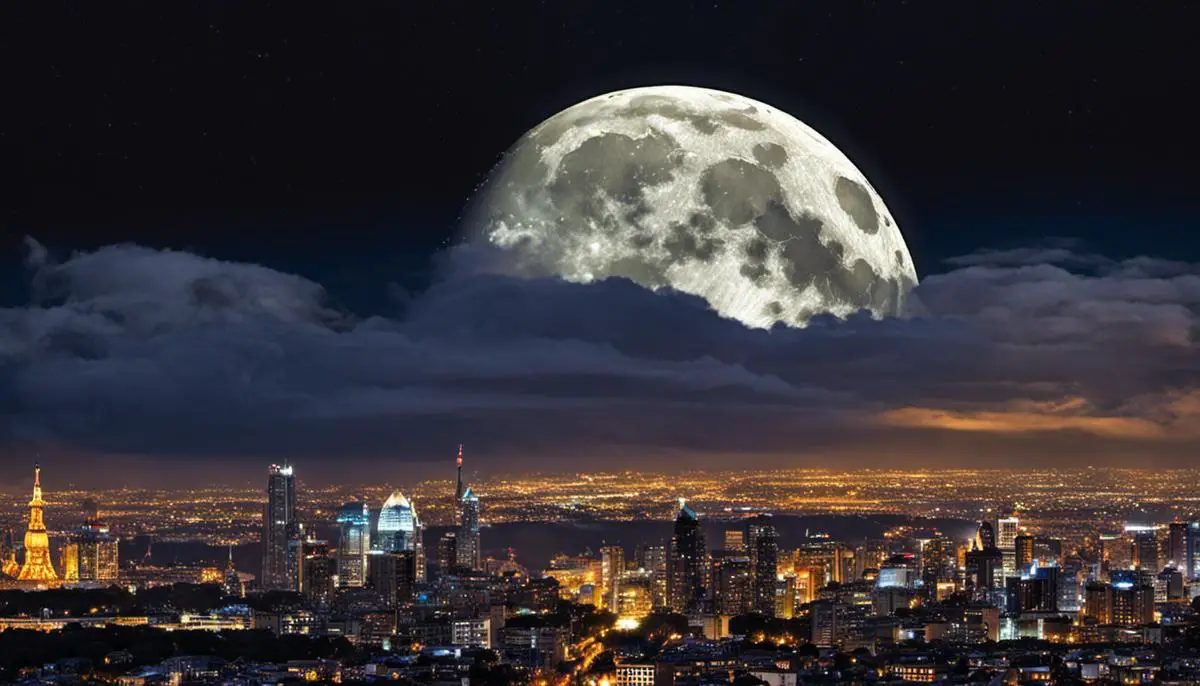
Historical and Cultural Contexts of Full Moons
In the annals of human history, full moons have incited fascination, shrouded in mystery and folklore. One must comprehend both the earthly and celestial implications of these lunar events anent the historical and cultural attitudes towards full moons.
Historically, full moons have been intricately linked with supernatural beliefs and mythologies across various cultures. For instance, the Ancient Greeks venerated Selene, the Goddess of the Moon, considering the full moons as her ultimate power. This Greek archetype has equivalents in a plethora of cultures, encompassing Chinese, Maori, Native American, and more. These historical narratives lay the groundwork for understanding culturally significant and shared ideas about full moons, leading up to the Full Moon in November 2023.
Depicting full moons as auspicious or ominous, powerful, or transformative, cultures worldwide assign importance to this celestial event. In folklores, full moons have been inextricably linked with transformation stories, often involving shape-shifting werewolves or lunacy. Today, these tales may appear outlandish, but they undeniably remain entrenched in our collective consciousness.
Notably, artistic and literary circles have adored full moons for centuries, providing an impetus for a plethora of creative endeavors. They found resplendence and inspiration in the full moon, a celestial body that illuminated the dark skies, revealing the otherwise concealed natural beauty. Its calming and vibrant presence has empowered many souls yearning to express their deepest emotions.
Lunar events, such as the Full Moon in November 2023, also hold an immense religious significance in various faiths. For instance, Buddhists commemorate the full moon as a day of utmost spiritual importance, observing the precepts with fervor and dedication.
Scientifically, full moons offer a unique opportunity to comprehend the Lunar surface at its brightest and most detailed. The reflected sunlight illuminates the Moon’s surface, highlighting its craters, maria, and highlands with prominent contrast. The full moon facilitates the identification of mineralogical variations and the determination of the Moon’s composition. This helps in decoding its history, including the impacts shaping its surface.
Furthermore, full moons expound on gravitational dynamics, revealing vital information about Earth-Moon interactions, through tidal bulges and tidal friction. The tidal patterns caused by the moon not only impact ocean levels but have significant geological effects on Earth, leading to phenomena like moonquakes.
The November 2023 Full Moon assumes further importance due to the atmospheric scattering effects on moonlight. The Earth’s atmosphere selectively scatters light based on its wavelength, contributing to the Moon’s perceived color. It reveals insights into our atmosphere’s properties and light’s intriguing behaviors, creating a unique spectacle for onlookers.
Thus, the Full Moon in November 2023 presents a compelling blend of cultural significance and abundant scientific opportunities. While it represents a possible juncture of aesthetic marvel, religious reverence, and scientific exploration, let us not overlook its potential to stimulate our curiosity and rekindle our appreciation for the vast celestial expanse. As we delve into the realms of lunar study, it is evident that bridging the gap between scientific knowledge and popular imagination requires not only facts and figures but a broad understanding of historical and cultural contexts as well.
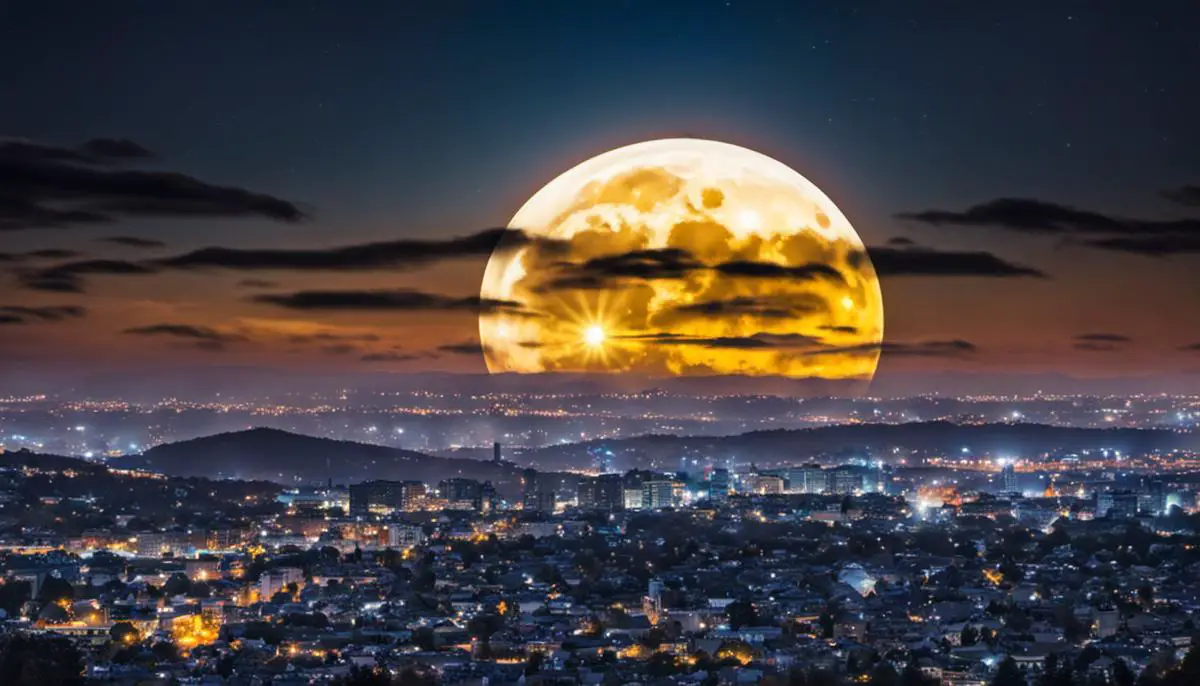
Full Moon Phenomena and Its Impact on Human Behaviour
Impacts of the Full Moon on Human Behavior: An Examination
When delving into the influence of the lunar cycle on human behavior, it is crucial to scrutinize the wealth of anecdotal evidence, folklore, and certain historical records that suggest a correlation between the full moon and a heightened state of human activity. Particularly noteworthy is the onset of higher energy levels, insomnia, and, in some instances, unusually impulsive or aberrant behavior. However, the scientific community has yet not reached a consensus, often leaning towards skepticism due to a lack of corroborating empirical evidence.
Well-documented across various cultures is a rich tapestry of stories, traditions, and beliefs attributing certain behaviors to the full moon. This propensity to believe in the moon’s impact on behavior is fascinating and is itself a behavioral facet that scientists have explored. Intriguing notions of lycanthropy – otherwise known as werewolf transformations – provide case examples of such conviction in the moon’s powers.
A plurality of studies examining lunar effects on humans, such as heightened aggression and exacerbated psychiatric disorders, have yielded varied results. An intriguing 1984 study published in the Journal of Clinical Psychology reported a significant increase in criminal activity during the full moon, contrasting with a 1985 published analysis that found little evidence to support such findings.
Furthermore, several medical studies have explored the correlation between the full moon and human health. Some find spikes in hospital admission rates, while others, such as the Journal of Sleep Research study in 2013, reported a disruption in sleep during the full moon phase, although the sample size was small. Such outcomes ought to motivate additional rigorous scientific investigation to arrive at a more conclusive understanding.
This responsible scrutiny of lunar impact on human behavior warrants ongoing study, especially of the Full Moon of November 2023. This unique event presents both a captivating and potentially enlightening opportunity for scientists, as it encompasses the confluence of lunar perigee, an alignment with Earth and Sun, and a lunar eclipse, all leading to enhanced brightness.
Holistically, it is essential to integrate scientific inquiries with cultural narratives and historical accounts when examining the alleged impact of the full moon on human behavior. Notwithstanding the scientific skepticism mainly due to elusive empirical evidence, widespread cultural beliefs retain a certain degree of potency, inciting particular forms of human behavior.
Even as an attempt to demystify the sway held by the full moon on human behavior continues, the dedication to probing the mysteries of the universe remains an unending mission. Whether or not the Full Moon of November 2023 will elicit tangible changes in human behavior, it surely reinforces humankind’s unwavering fascination with our celestial partner. Surely, the opportunity to fuse the scientific and the cultural in this pursuit promises intriguing insights and enduring fascination. The study of our celestial partner remains as much a scientific endeavor as it is an exploration of humanity’s cultural fabric.
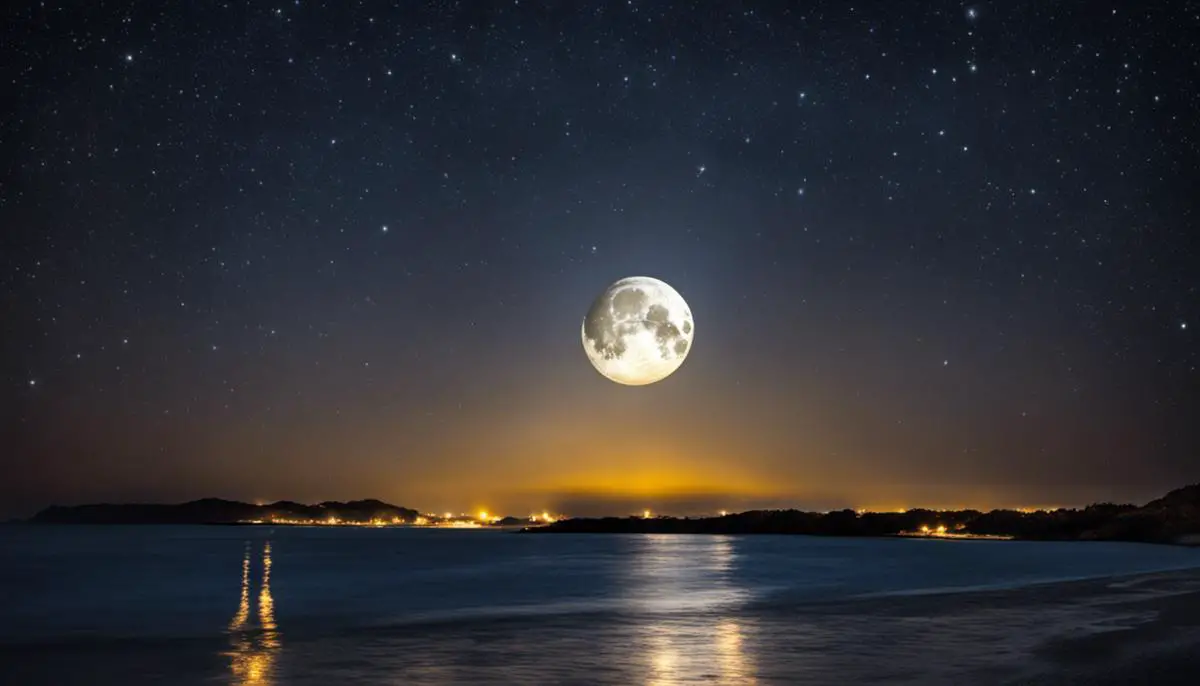
Through the eye of the beholder, the Full Moon of November 2023 can be so much more than a natural occurrence in the night sky—it represents an interaction point where science converges with cultural traditions and where celestial movements potentially influence behavioural phenomena. Become immersed in this fascinating discourse, transcend astronomical theories and cultural narratives, and discover the undeniable sense of intrigue that surrounds the November 2023 Full Moon—and perhaps nurture a deeper connection to our expansive cosmic theatre.
FAQ
What are the dates of the full moons in 2023?
The full moons in 2023 fall on different dates every month. The dates in the lunar calendar might vary significantly from year to year because they are based on the moon’s orbit around the Earth. The full moons in 2023 will usually fall in the middle of each month. The precise dates, however, might change based on your time zone. For the most precise and current information on the full moon dates in 2023, it is recommended that you refer to a lunar calendar or an astronomical reference. Since different full moons have different names in different countries and traditions, these celestial phenomena have long been fascinating and significant to many cultures.
What date is the new moon in November 2023?
November 17 is the date of the November 2023 new moon. Because the moon is positioned between Earth and the sun, its dark side is facing us, making the new moon a celestial event in which the moon is not visible from Earth. This is the start of a new lunar cycle, which is frequently connected to a time of reflection and gloom. November 17th is the primary day when the moon will be at its darkest phase. It will gradually transition into the waxing crescent phase as it becomes visible in the following days. The actual timing of the new moon may vary somewhat depending on your location and time zone.
Why is it called Beaver moon?
One of the monikers attributed to the full moon that falls in November in the past is the Beaver Moon. These names, which are connected to the varying seasons and natural occurrences, are frequently drawn from Native American, Colonial American, or other cultural traditions. It’s thought that the Beaver Moon got its name because it falls during the season when beavers are most active. Beavers would put in a lot of effort in November to construct and maintain their lodges and dams in order to survive the winter. During this time, the brilliant light of the full moon was believed to help these nocturnal critters in their activity. Every full moon name has a distinct historical and cultural meaning that provides an insight into historical natural rhythms and folklore.
Why is the Beaver Moon special?
Because of its association with the natural world and the varying seasons, the Beaver Moon is particularly significant. One of the various customary names for full moons throughout the year, originating from Native American, Colonial American, or other cultural traditions, is this one, which falls on November on average. It’s unique because it reminds us of the complex interrelationship between the environment and the lunar calendar. Regarding the Beaver Moon, its name symbolizes the period of time when beavers are busiest, building and maintaining their lodges and dams in order to get ready for the winter. It was thought that these creatures were helped in their nightly tasks by the brilliant light of the full moon. The Beaver Moon is a distinctive and special part of our cultural and natural heritage because of this relationship between the moon and wildlife behavior, which represents the profound understanding that early cultures had of the natural world and its cycles.
How does the Beaver Moon affect people?
Similar to other full moons, the Beaver Moon has no discernible scientific impact on humans. But it can also have more subdued, symbolic, and cultural effects on our lives. Moon names that have been traditional, such as Beaver Moon, serve as a reminder of the intimate connection that early human communities had with the natural world. They may raise awareness of the changing of the seasons and the necessity of getting ready for winter. The Beaver Moon is a cultural marker that deepens our understanding of the intricate balance of nature and links us to indigenous wisdom and old customs. Thus, even if the significance of the Beaver Moon and other full moon names is mostly symbolic and cultural, they contribute to our comprehension of the world around us.
Is Beaver moon same as Blood moon?
No, there is a difference between the Blood Moon and the Beaver Moon. These are separate names for several lunar phenomena. One of the monikers given to the full moon in November in the past, “Beaver Moon,” is frequently connected to the activities of beavers at this time of year. As an example, a total lunar eclipse occurs when the Earth passes between the sun and the moon, turning the moon a reddish or copper color. In this case, the term “blood moon” is sometimes used to describe the event. Only the longer-wavelength red and orange tones of sunlight are able to reach the moon, giving it its characteristic “blood” appearance. Although they refer to separate lunar phases and have different origins and characteristics, both names are related to lunar events.
![]()
